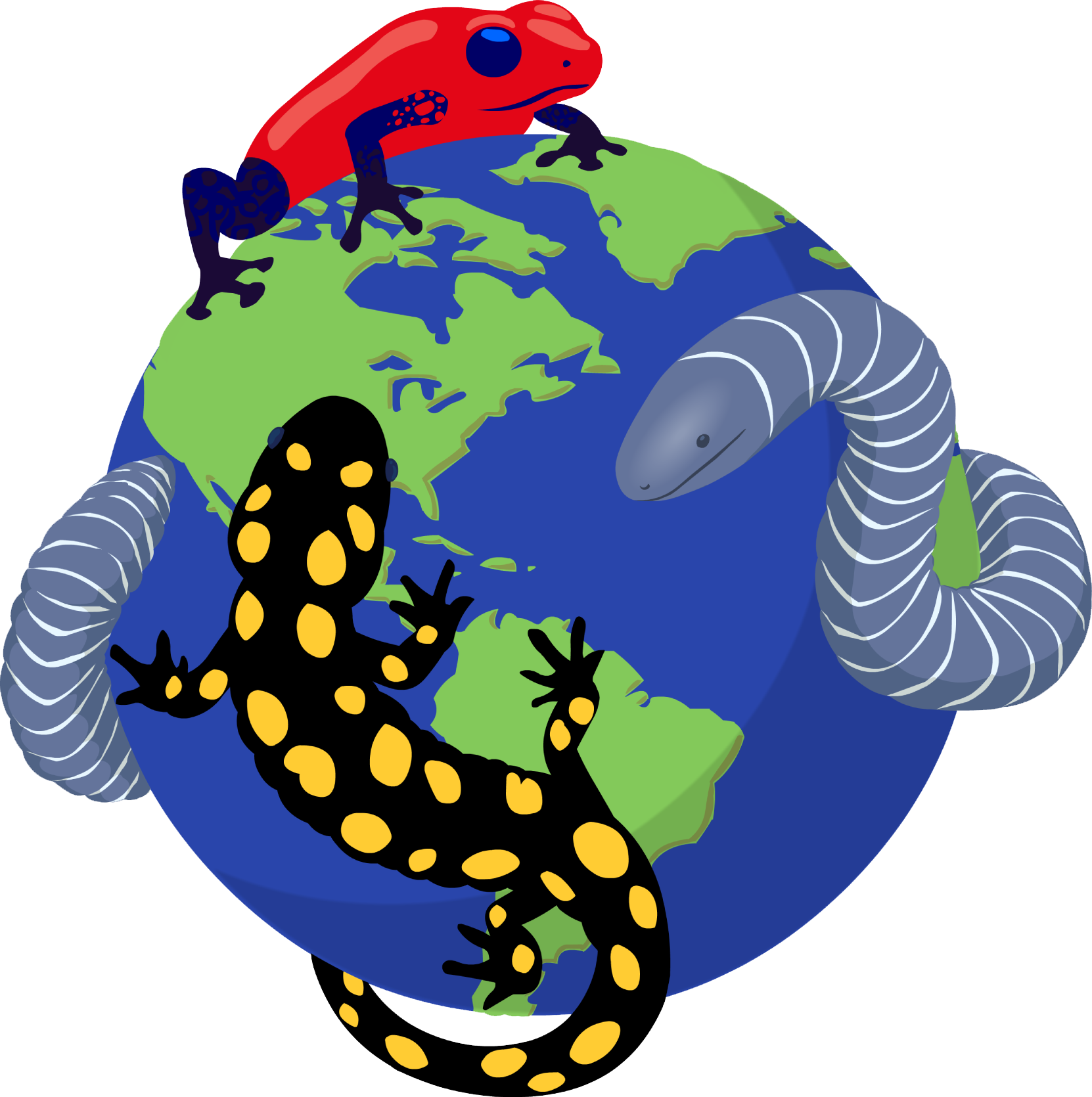|
Xenorhina waigeo Günther, Richards, Tjaturadi & Krey, 2020
| family: Microhylidae subfamily: Asterophryinae genus: Xenorhina |
| Species Description: Guenther R, Richards SJ, Tjaturadi B, Krey K. 2020. Two new microhylid frog species of the genus Xenorhina Peters, 1863 from the Raja Ampat Islands, Indonesia. Vertebrate Zoology Senckenberg 70:333-347 | |
|
Etymology: The species epithet, “waigeo,” refers to the island of Waigeo, located in Indonesian New Guinea, where this species was collected and described (Günther et al. 2020). |
|
|
|
|
Description DIAGNOSIS: Xenorhina waigeo is among a group of Xenorhina species that lack vomero-palantine spikes and was compared to the other species in this group by the species authority. This group includes X. adisca, X. arboricola, X. arndti, X. bouwensi, X. brachyrhyncha, X. eiponis, X. macrodisca, X. minima, X. oxycephala, X. parkerorum, X. similis, and X. varia, and finally Xenorhina salawati, which was described in the same article as X. waigeo and is the most morphologically similar. Xenorhina adisca and X. minima are smaller, have shorter legs, and lack expanded discs on toes compared to X. waigeo. Xenorhina arndti is also smaller, has a shorter internarial distance, and has narrower finger and toe tips. Xenorhina bouwensi is also much smaller than X. waigeo. Xenorhina arboricola and X. macrodisca, however, have strongly expanded finger discs, which are not present in X. waigeo. Xenorhina eiponis has much longer legs than X. waigeo. Xenorhina parkerorum and X. similus are much larger than to X. waigeo. While having shorter legs than X. waigeo, X. oxycephala, which is likely to be polyphyletic given mDNA studies, is also larger overall with slightly broadened discs on fingers, and smaller eyes. Xenorhina waigeo is most like X. salawati, although differs primarily in advertisement call series, with X. salawati’s series being greatly elongated and consisting of 2 - 4 times more calls per series compared to X. waigeo’s. Slight morphological differences between the two species include X. salawati having mildly shorter legs and 4th toes, as well as a greater distance between the eye and snout tip compared to X. waigeo. In preservative, compared to X. waigeo, X. salawati have lighter dorsal surfaces, strong mottling of the throat, and less intensely pigmented surfaces of fingers and toes (Günther et al. 2020). COLORATION: In life, the dorsal surface of the body and head are beige with dark brown spots around the lateral edges of the head, on the anterior and posterior limbs, and around the vent. The snout tip is grey or off-white with small grey indents. The eyes are colored with silver specks overlaid on golden irises. Dorsal and dorsolateral tubercles are noted to be lighter than the surrounding skin. Other dorsal surfaces are differing tones of bluish brown or beige, with ventral surfaces of pastel yellow with small white flecks. There are no spots present on the posterior chest or abdomen, however, there are grey-brown spots of varying prominence on the throat, anterior chest, and extremities. The abdomen has a prominent “pear-shape” formed by two very prominent zinc-yellow longitudinal stripes. There is also a pale lumbar spot visible. The ventral surface of the feet and hands are shades of grey-brown (Günther et al. 2020). In preservative, the dorsal surfaces become a pale brown, with ventral surfaces changing to ivory white. Darker skin regions may remain the same color as in life, and the lumbar spot is no longer visible (Günther et al. 2020). VARIATION: Among adults, dorsal colorations can vary from brownish or blueish. There is also a yellowish mid-dorsal line present in half of the samples collected and described, 60% of which were among the blueish dorsal coloration group. Grey snout tips were present in most live specimens, which became more prominent when preserved (Günther et al. 2020). Distribution and Habitat Country distribution from AmphibiaWeb's database: Indonesia
Life History, Abundance, Activity, and Special Behaviors Thirty-one call series were recorded at 25oC with an average length of 1.15 s with 2 - 6 calls per series lasting an average of 76 ms. Calls were unpulsed with approximately equal lengths and intervals except the last, which are often the longest. During each call series, the volume of calls commonly increased after starting abruptly. All calls recorded had between 6 - 8 harmonics between 0.25 and 3.8 kHz, with a dominant first harmonic often peaking at 0.45 kHz (Günther et al. 2020). Trends and Threats Possible reasons for amphibian decline General habitat alteration and loss Comments OTHER INTERESTING INFORMATION: As of its first description in 2020, X. waigeo is one of only three members of its genus endemic to the Raja Ampat Islands, the other two being X. varia, and X. salawati (Günther et al. 2020). References Günther, R., Richards, S., Tjaturadi, B., and Krey, K. (2020). Two new microhylid frog species of the genus Xenorhina Peters, 1863 from the Raja Ampat Islands, Indonesia. Vertebrate Zoology, 70(3), 333-347. [link] Originally submitted by: Andrew Antes (2024-12-03) Description by: Andrew Antes (updated 2024-12-03)
Distribution by: Andrew Antes (updated 2024-12-03)
Life history by: Andrew Antes (updated 2024-12-03)
Trends and threats by: Andrew Antes (updated 2024-12-03)
Comments by: Andrew Antes (updated 2024-12-03)
Edited by: Ann T. Chang (2024-12-03) Species Account Citation: AmphibiaWeb 2024 Xenorhina waigeo <https://amphibiaweb.org/species/9249> University of California, Berkeley, CA, USA. Accessed May 12, 2025.
Feedback or comments about this page.
Citation: AmphibiaWeb. 2025. <https://amphibiaweb.org> University of California, Berkeley, CA, USA. Accessed 12 May 2025. AmphibiaWeb's policy on data use. |


 Map of Life
Map of Life